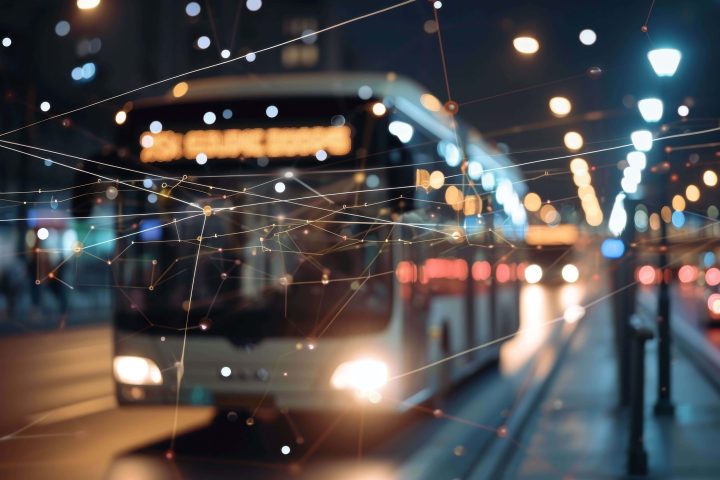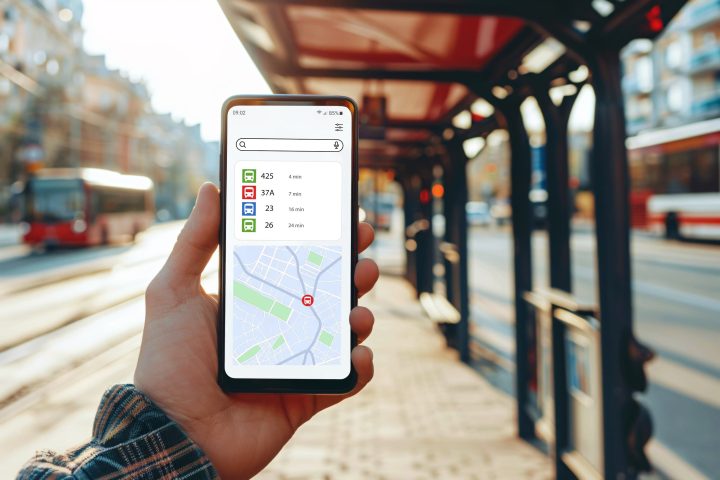Enhancing passenger flow in urban mobilities through innovation is key to improving urban mobility systems : this is the challenge that every transport operator must take up. Urban mobilities are evolving with the integration of cutting-edge technologies aimed at optimizing passenger management while elevating user experiences. Intelligent urban mobility systems (IUMS) centralize these advancements, providing operators with powerful tools to address challenges effectively. Among the most impactful solutions are automatic passenger counting systems.
Optimizing public transport passenger flows through innovation

Automatic passenger counting systems
Automatic passenger counting systems gather precise data on the number of passengers boarding and alighting at each stop, as well as their distribution within vehicles. This data helps identify underutilized routes and areas where demand exceeds supply.
Collected in real time, this information gives operators a clear, instantaneous view of network performance. Using this data, they can optimize passenger flow management, adjust vehicle deployment, and adapt schedules to meet peak demand. These swift adjustments minimize wait times and alleviate overcrowding, enhancing the overall user experience.
How innovation optimizes passenger flow in urban mobilities ?
The integration of new cutting-edge technologies with metering solutions opens up new possibilities for optimising networks and improving the user experience.
🌐 AI in urban mobilities : predicting and managing passenger flow
Artificial intelligence goes beyond descriptive analytics by predicting passenger flow variations. Using algorithms, AI considers factors like time of day, day of the week, weather conditions, and local events to model precise behavioral patterns. These predictions enable proactive resource allocation, balancing passenger distribution more effectively.
AI also offers real-time adaptability to unexpected events. In cases of disruptions like breakdowns or accidents, AI can reroute passenger flow by identifying alternative solutions. This combination of predictive power and rapid response is critical to maintaining network efficiency in the face of unforeseen challenges.
👨🏻💻 Digital platforms and mobile applications
Digital platforms and mobile apps enhance interaction between users and operators. These tools centralize vast amounts of information such as schedules, delays, and congestion levels and make it accessible to users. Intuitive interfaces empower passengers to plan journeys with real-time accuracy.

These platforms go beyond providing information ; they actively influence passenger behavior. By suggesting alternative routes to avoid congestion or highlighting optimal travel times, they contribute directly to the optimization of passenger flow.
🚍 Autonomous urban mobilities
Autonomous vehicles represent a breakthrough in passenger flow management due to their adaptability. These vehicles can be rapidly deployed to high-demand areas without requiring direct human intervention. Equipped with geolocation and sensor systems, they navigate safely and efficiently.
Their operational flexibility allows them to serve underrepresented areas like suburbs or short-distance routes. They can also act as overflow solutions during peak congestion periods. Seamlessly integrated into existing networks, autonomous vehicles require minimal infrastructural adjustments, making them cost-effective and scalable.
A sustainable vision for urban mobilities
Optimizing passenger flow in urban mobilities extends beyond operational improvements. Efficient network management significantly reduces unnecessary trips, greenhouse gas emissions, and energy consumption. By streamlining mobility, these innovations make urban mobilities more appealing and environmentally friendly.
These innovations are transforming urban mobilities into smarter, more flexible, and sustainable systems. From automatic passenger counting to artificial intelligence and autonomous vehicles, each technology contributes to more effective passenger flow management. By investing in these solutions, mobility networks are equipped to tackle future challenges while offering enhanced experiences for users.
For more informations, click here
